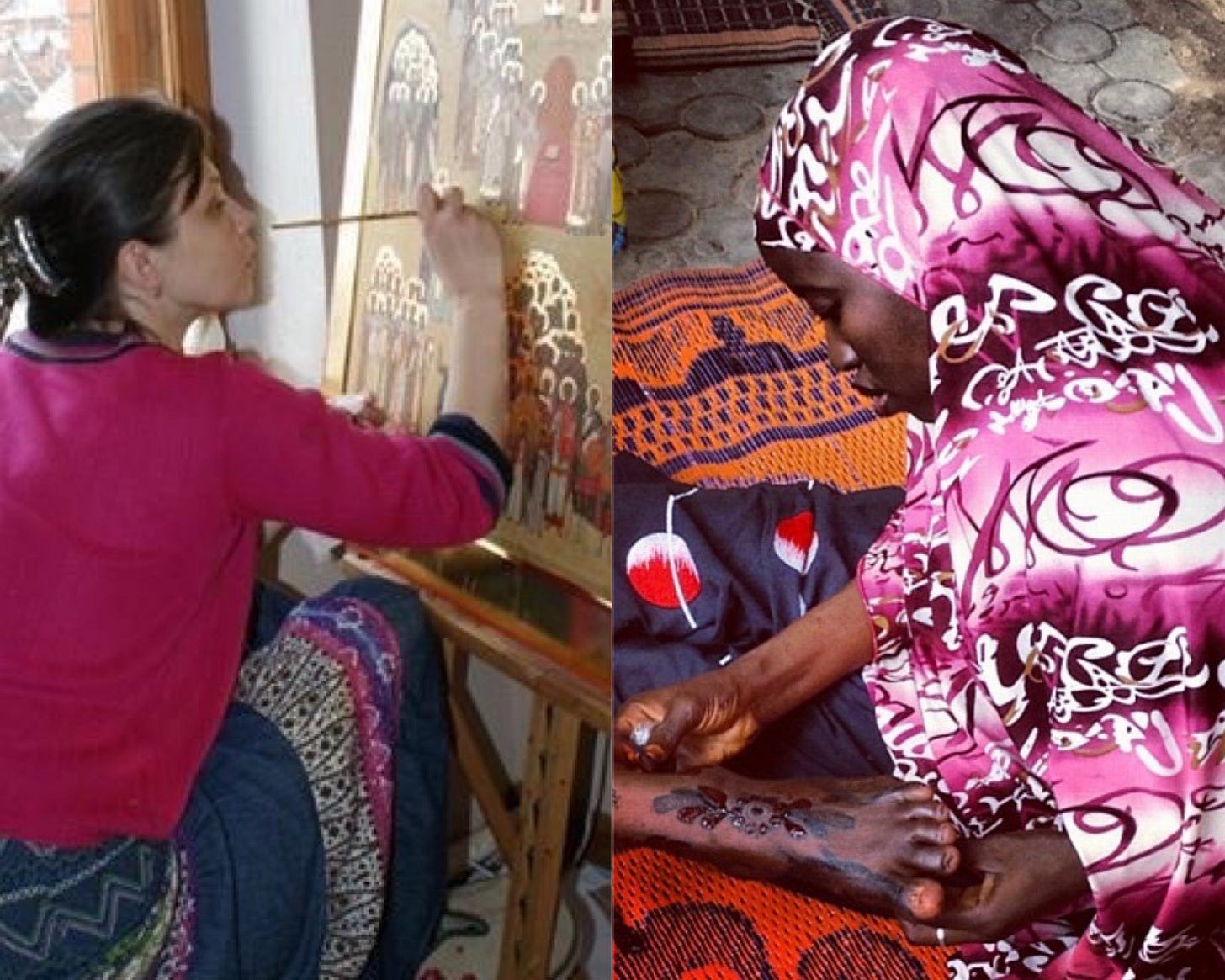
I follow along a narrowing dirt path surrounded only by dense forest. The path eventually clears to cobblestones. The gate from the courtyard is unlatched and just beyond is a small wooden house nestled in a liminal clearing. It’s sat there for more than a century, though I can sense a spirit residing inside that is much more ancient than that. The door beckons. Is it some kind of portal? To where? Towards what? I am compelled to cross its threshold into a world of pure imagination. The worn cabin’s insides become a labyrinth, the boundaries known to the master of the house alone. The painted walls guide me. I trace the elaborate imagery with my own fingertips, brushlike, making indents in the piled layers of dust. The strokes become familiar, welcome me home even, and I am one with its painter—she is like a saint, eager to share, to teach, something profound. Embedded in the paint are truths, learned by humans throughout the ages. I can only begin to grasp at their teachings.
I open not with a dream, but a vivid daydream that surfaced during my research for part II of this newsletter—an exploration of transforming dreams into a tangible existence. So, let me tell you a story about the gifted souls who grew old and painted the walls of their houses into all-consuming dreamscapes like the one I just described.
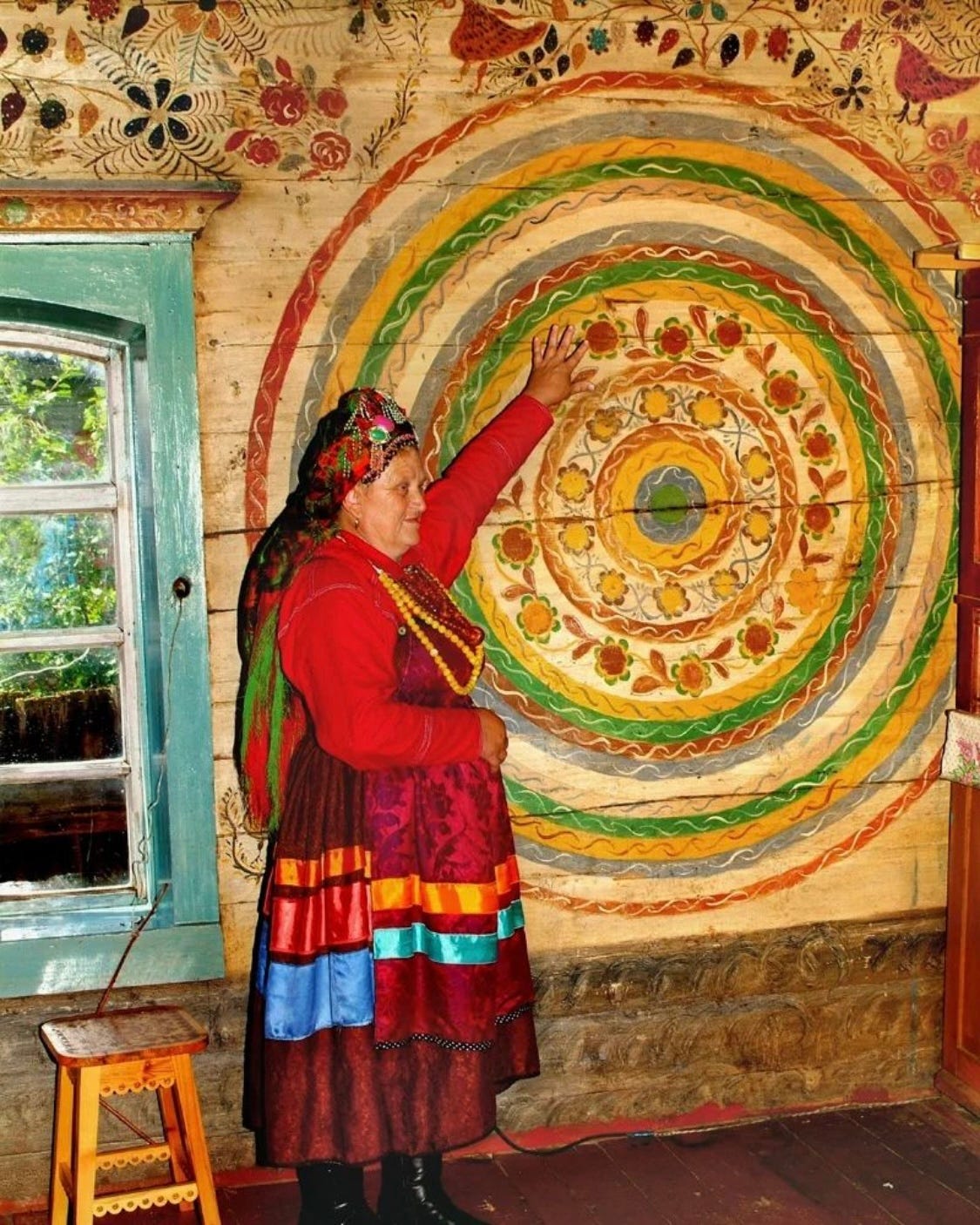
We commence our journey with a glimpse into the traditions cherished by the "Semeiskie" community. They are the Orthodox Old Believers exiled to Siberia by Catherine the Great more than three centuries ago when their sacred rites and rituals came to be in opposition to those of the official state church. The Semeiskie (“families”) hold an ancient practice of painting the walls, ceiling, and partitions of the house—an important element of their spiritual culture and communion with God.
Now, allow me to introduce you to three old women whose otherworldly art evokes a striking resemblance to the spiritual traditions of the "Semeiskie" community. Though not originating from the Semeiskie, these women share a deep spiritual and artistic connection in their craft. With every stroke of their brushes, they coat the walls and ceilings in their homes with primitive and mystical symbolic imagery. The wonderful walls echo the very essence of dreams, transcending the physical boundaries and immersing viewers in a realm of wonder and imagination. Moreover, these houses decorated in myth provide a much-needed respite from the plague of millennial gray we see in today’s interiors.
The first artist on our list is Polina Raïko. She was born in 1928 in the remote Oleshky village of the southern Kherson region in the Ukraine, not at all far from the Black Sea coast. Polina, also an Orthodox Christian woman (though not of the Old Believers), began painting at the ripe age of 69 after a period of immense suffering in her life.
In 1994, she lost both her daughter, Olena, and husband, Mykola. Four years later her son Serhiy, who was a violent alcoholic, was sent to prison, and it wasn't until then that her first wall paintings came to life. The blog, The Hermitage, describes her work:
“Flowers began to grow from the windowsills, mythological beasts roamed the edges of rooms, primordial forests grew beside kitchen cupboards. Babushka-Polina's strange enchanting figures, animals and scenes covered the walls throughout her house. Her colours are bright, and the paintings have overwhelming presence. As Nataliya Kosmolinska says, it is as if these things were born new from the Yaytse-Raytse (the Ukrainian Mythic Egg from which all things are born).”
Using ordinary house paint, she painted thirty-six walls, nine ceilings, and some of the courtyard. In line with Jung’s theory of the collective unconscious (discussed in pt. I of this newsletter), much of her imagery was religious in nature– with churches, saints, winged figures and heavenly birds regularly manifesting.
After Polina's death on January 15th 2004, a painted phrase was found on the garage door: "How to find a way to paradise..."
Artists from across Ukraine have made pilgrimages to Polina Raïko’s home, but sadly it was destroyed last month after the Kakhovka dam collapse.
Second we have Enni Id (1900-1992) from Padasjoki, a rural part of Finland. Her painting journey began with widowhood in her sixties, much like Polina. She adorned the walls of her cabin with brightly colored floral motifs, perhaps symbolizing the essence of growth and renewal, alongside representations of cats, embodying both mystery and independence, and plants, serving as timeless symbols of life and interconnectedness. Below is a video tour of her house.
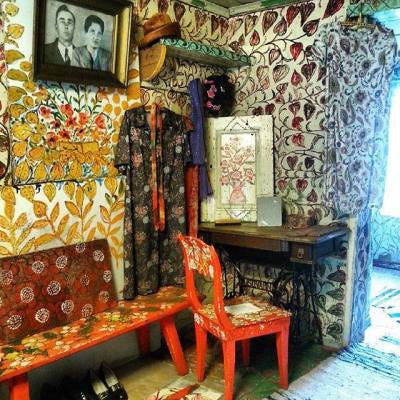

Last comes Bonaria Manca, who was born in Orune, Sardinia in 1925. The twelfth of thirteen children in a family of shepherds, she was set to follow in her family's footsteps after their move to Tuscania in 1950. Following the death of her parents, she began to paint the walls of her home which she called ‘La Casa dei Simboli.’ She also painted canvases which she refused to sell because she believed that her work had a soul, and therefore could not be separated from her.
Manca painted scenes of rural life, women washing clothing in rivers, and surrealist figures. Writer and filmmaker Jean-Marie Drot said of her work: "What I like about Bonaria's work is that almost nothing comes from the head, but everything comes from the heart. For me, it's a cosmic painting. [...] The house of Bonaria, in a way, is perhaps unique in all of Italy. Having a Bonaria painting is like having a talisman, a lucky charm in a world of loneliness, like opening a window to the next day, a future full of light."
Bonaria Manca died in Tuscania in 2020 at the age of 95. Here she is singing a folk song about her homeland, Sardinia, in her gloriously painted home.
What captivates me most about these prolific women is the obsessiveness with which they painted, implying some seemingly sacred mission—and the fact that they started well into old age. It is as if they released a lifetime of dreams, their creativity erupting dramatically in later years, from which wild and imaginative art was birthed. This parallels my own desire to obsessively make stuff after what feels like a lifetime of creative dormancy. I’m sure many of you can relate.
As we step into these painted worlds, we are invited to interpret the symbols and messages they ponder, almost like deciphering ancient manuscripts. In the artistry of these women (and the Semeiskie), we find a profound connection to Jung's concept of the collective unconscious (see pt. I). The repeated archetypes and symbols across the walls—the utter saturation of every nook and cranny is akin to a spiritual mantra. A fervent prayer. A call to God. We are made to contemplate old age, suffering, death, rebirth and creation. The houses become living galleries of Jung's theory, bridging the gap between the conscious and the unconscious, inviting us to explore the depths of our own psyche and connect with the timeless, spiritual aspects of human existence.




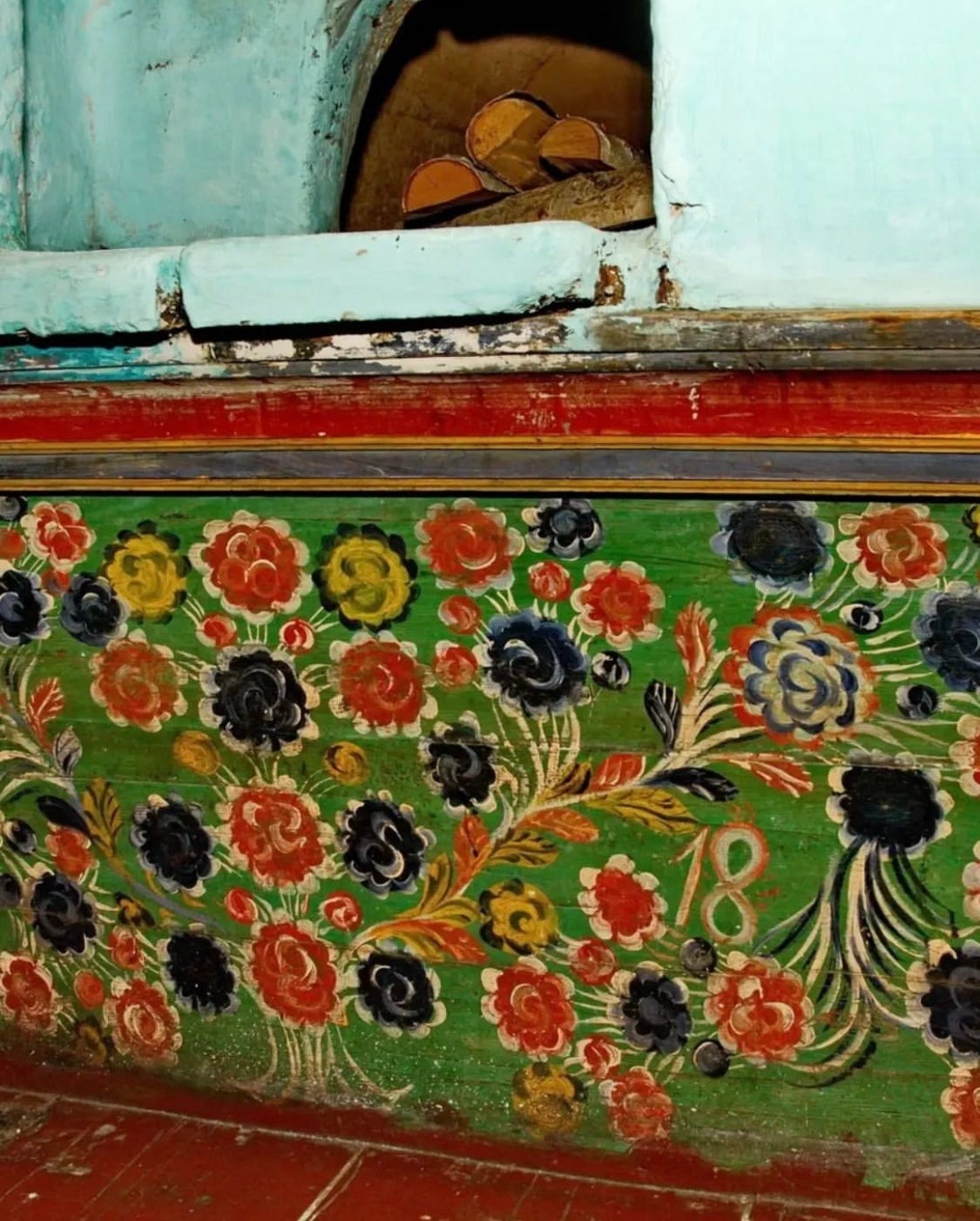
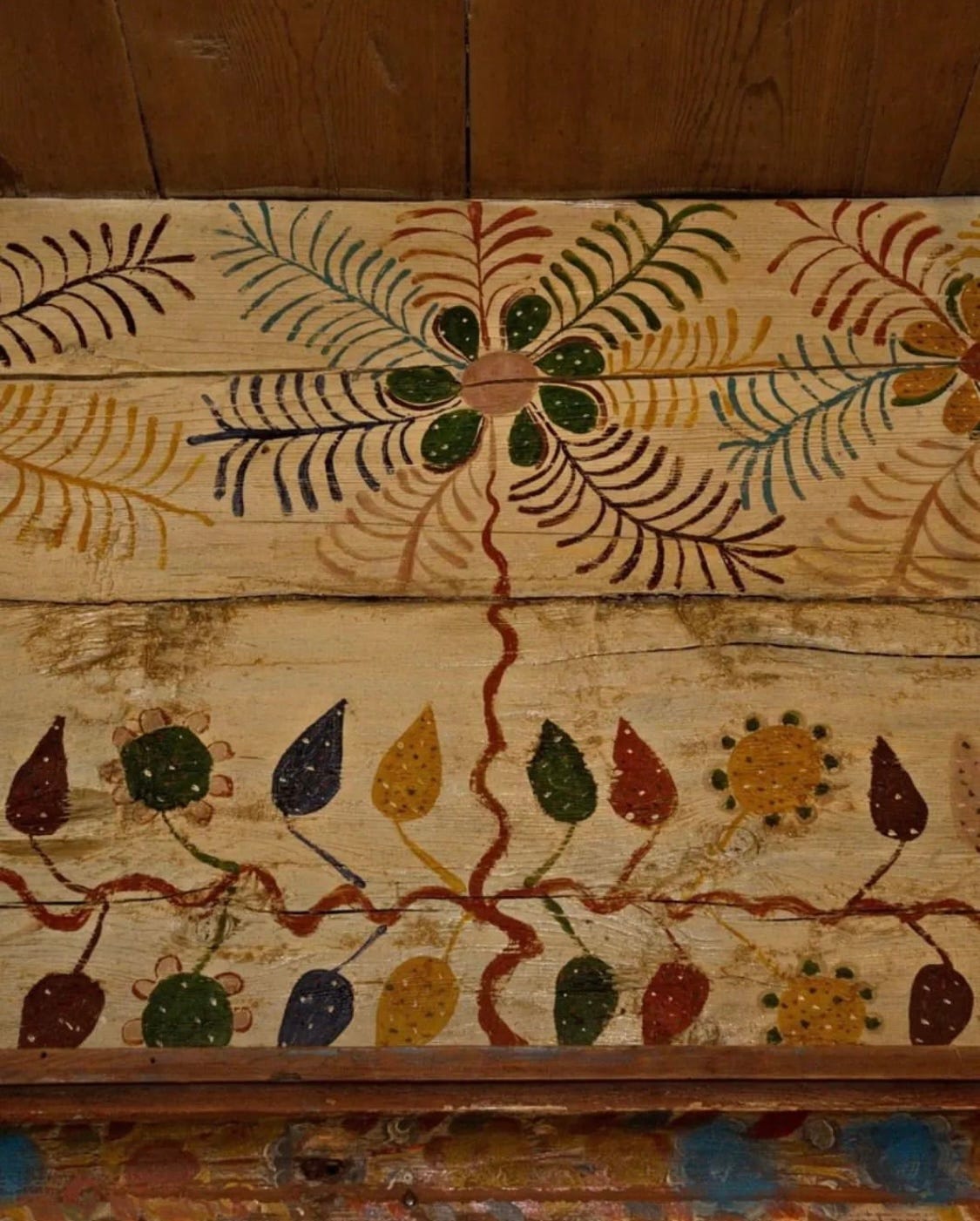
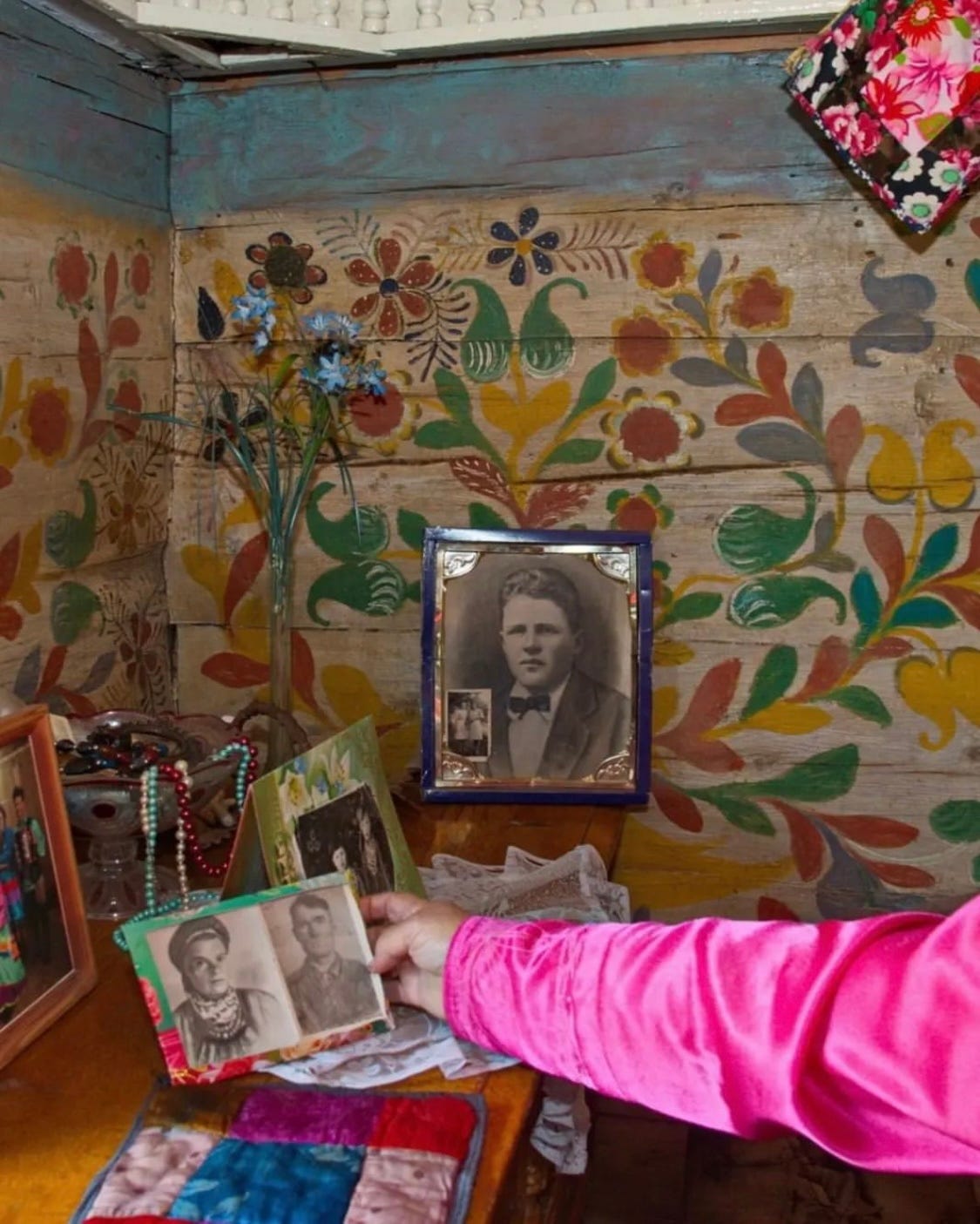
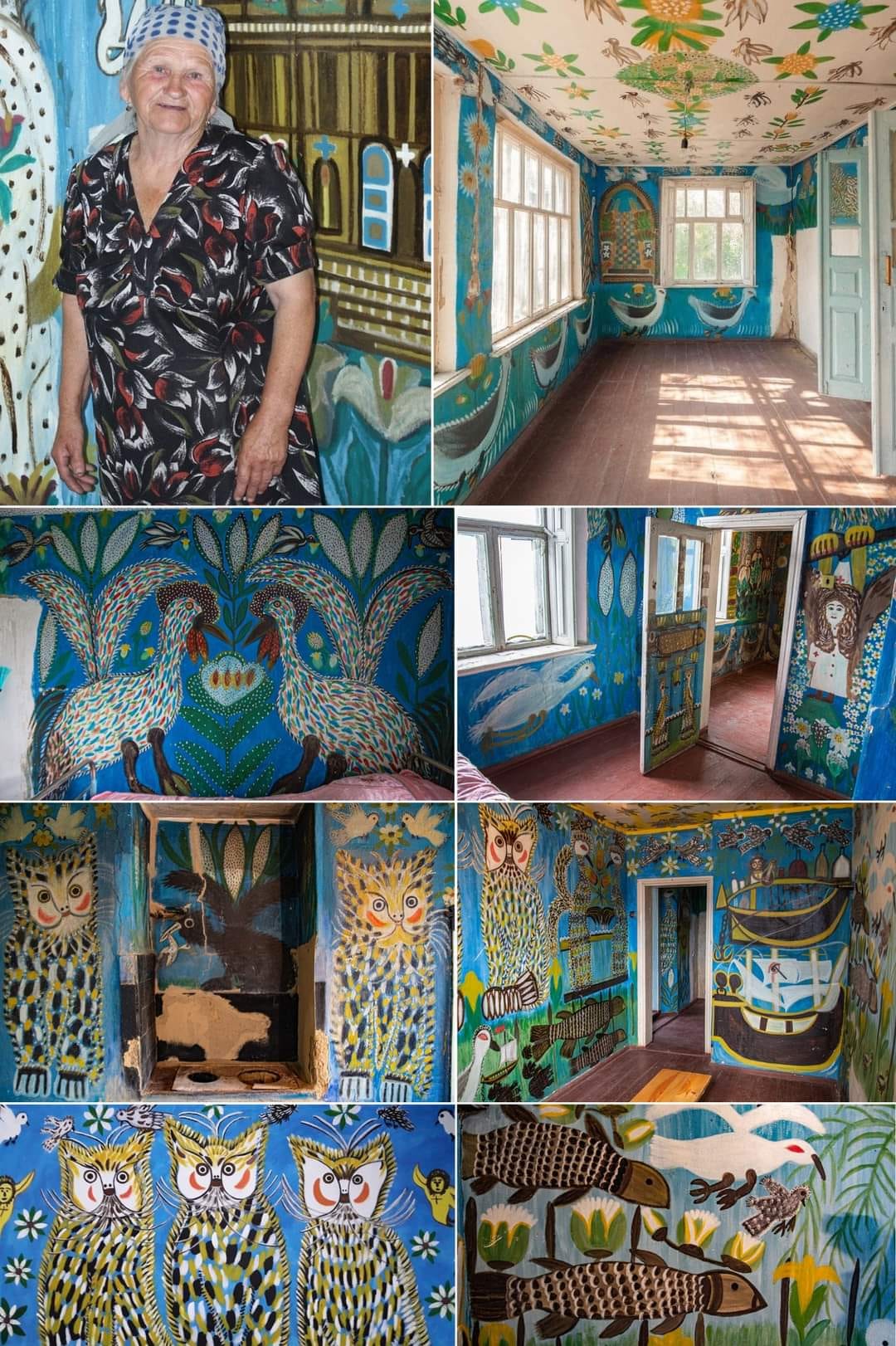
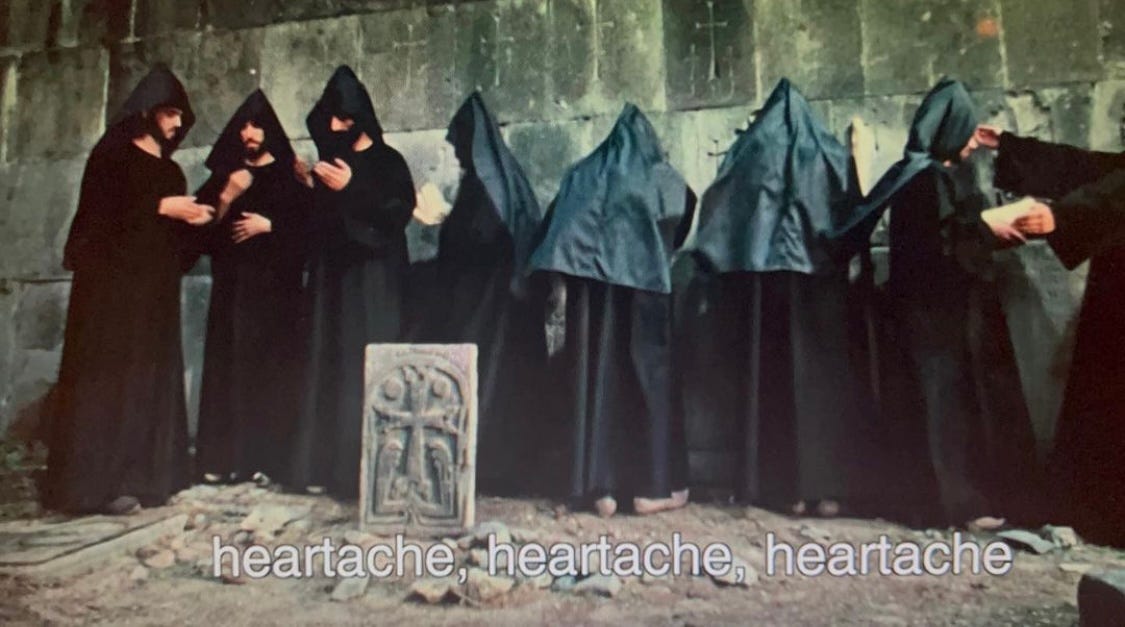

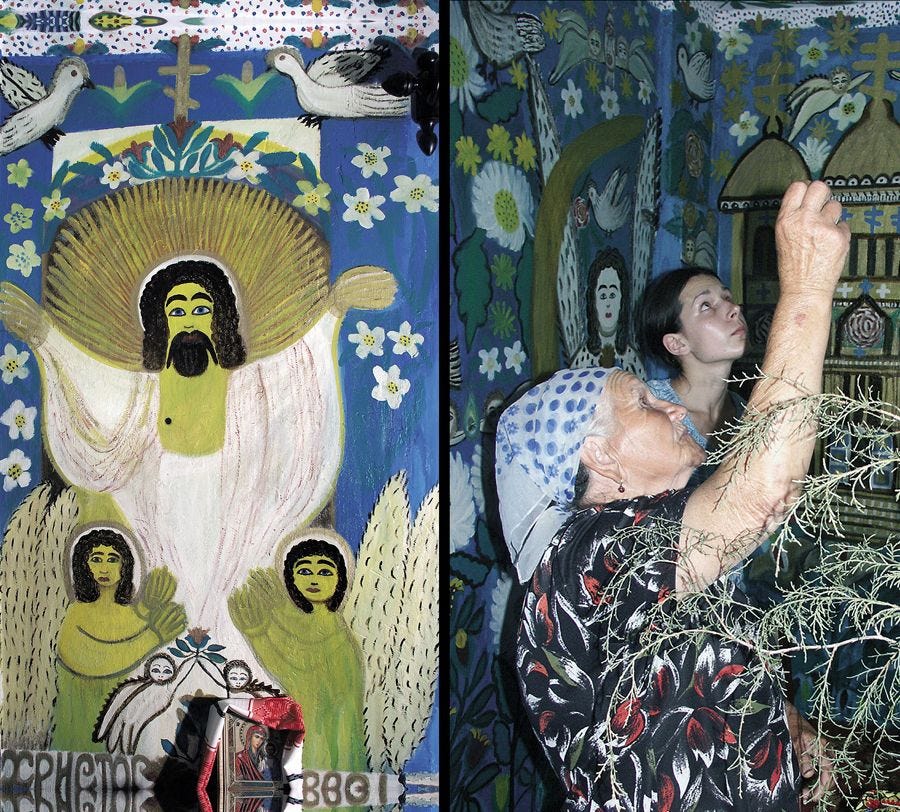
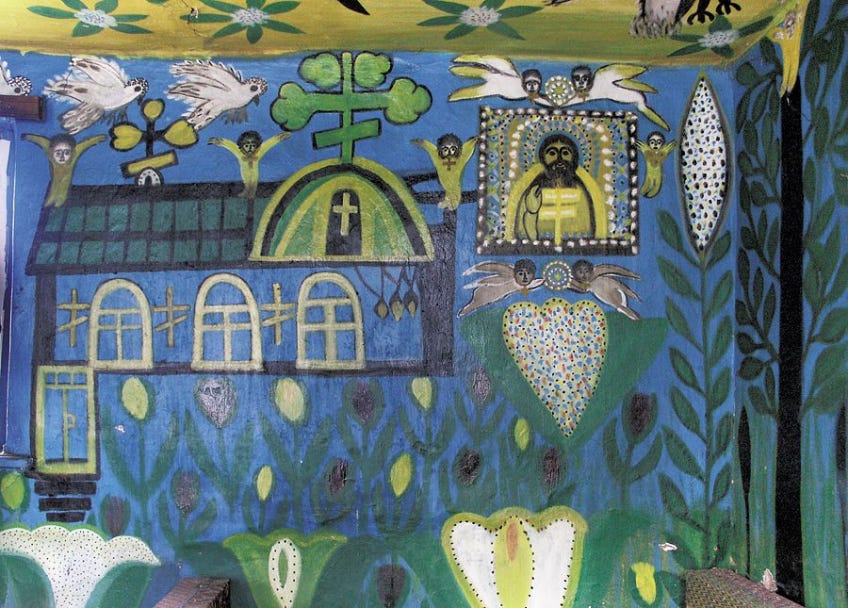
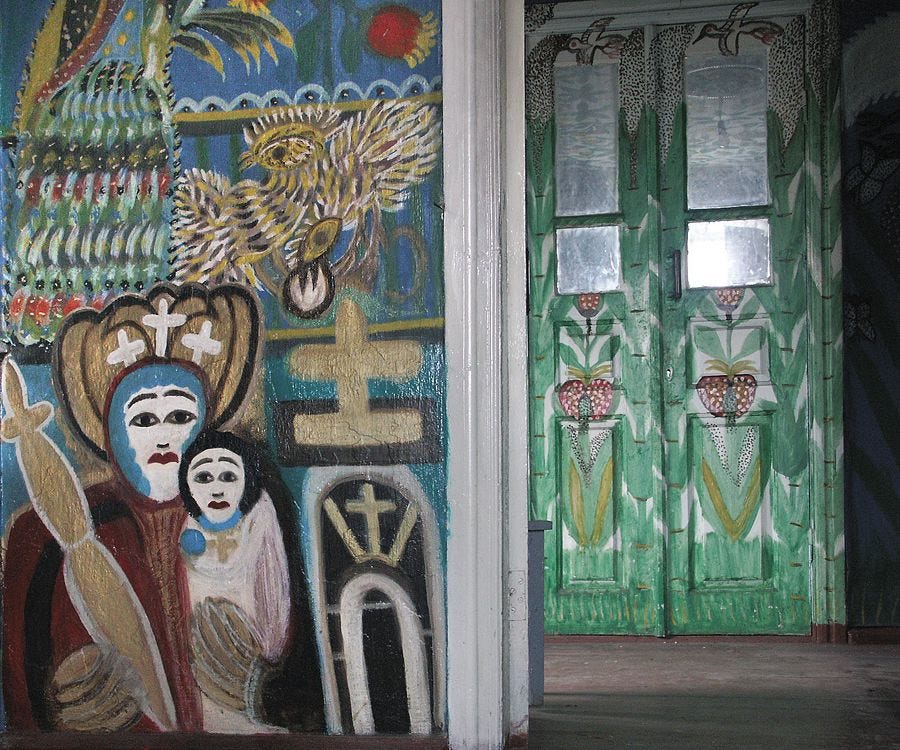
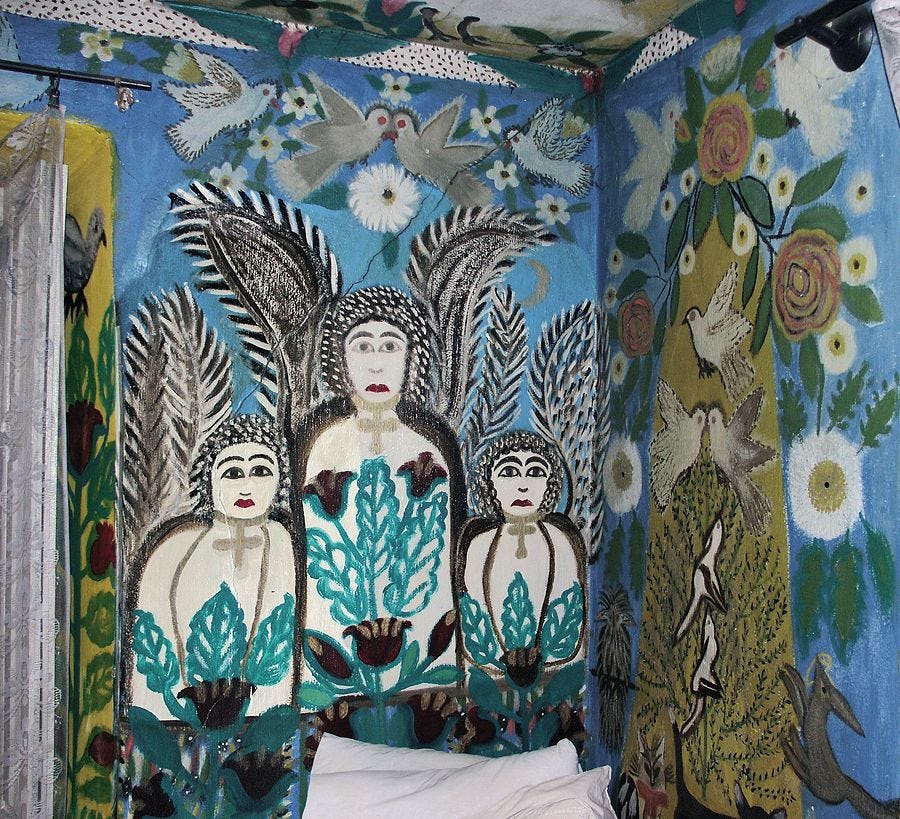

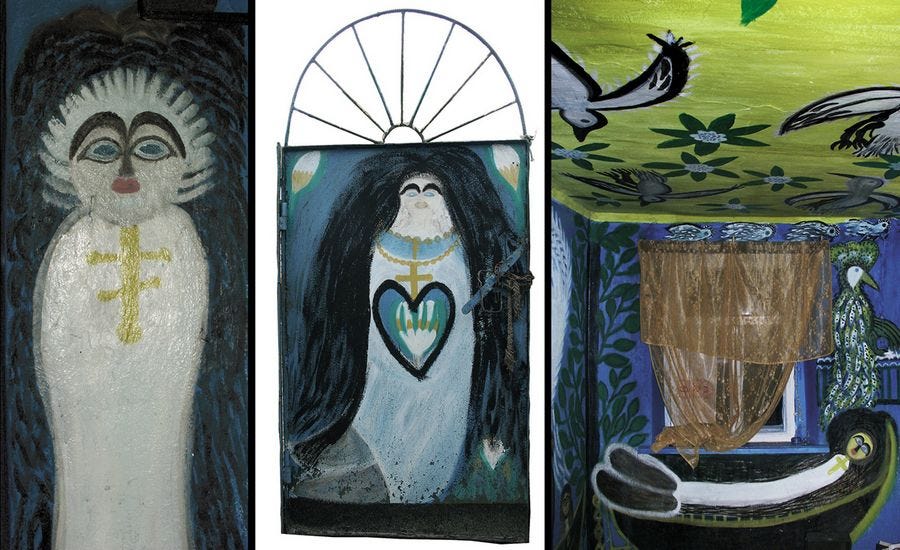
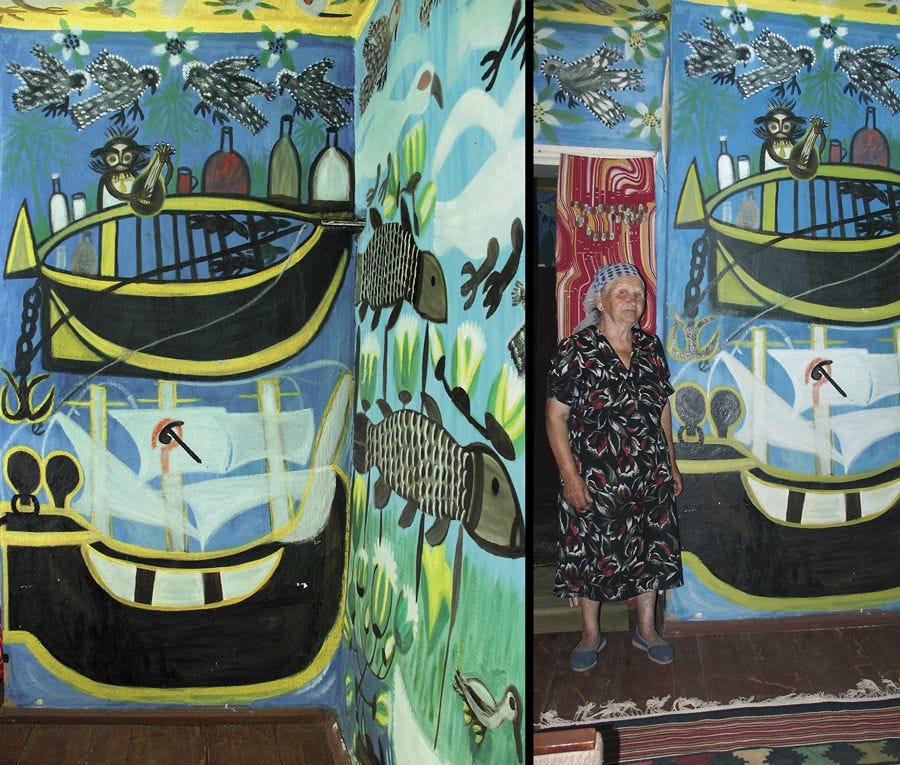
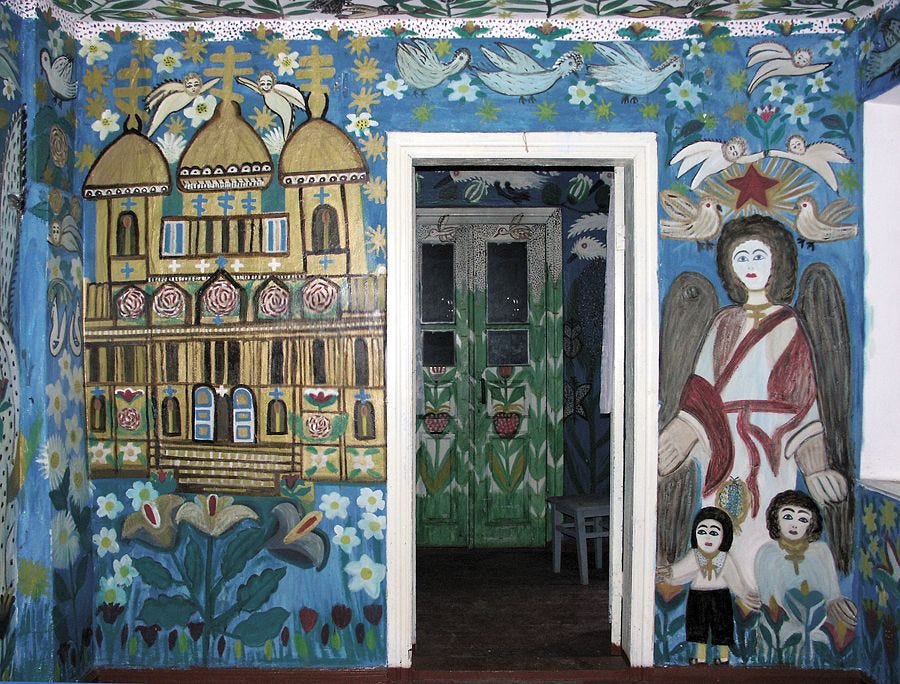
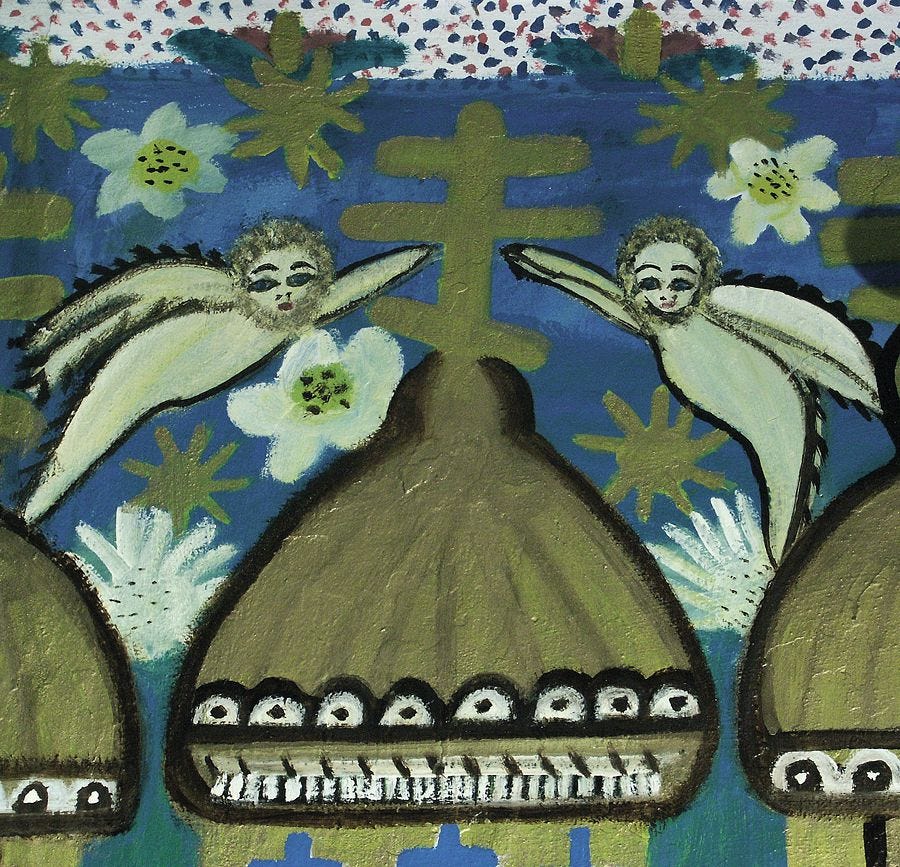

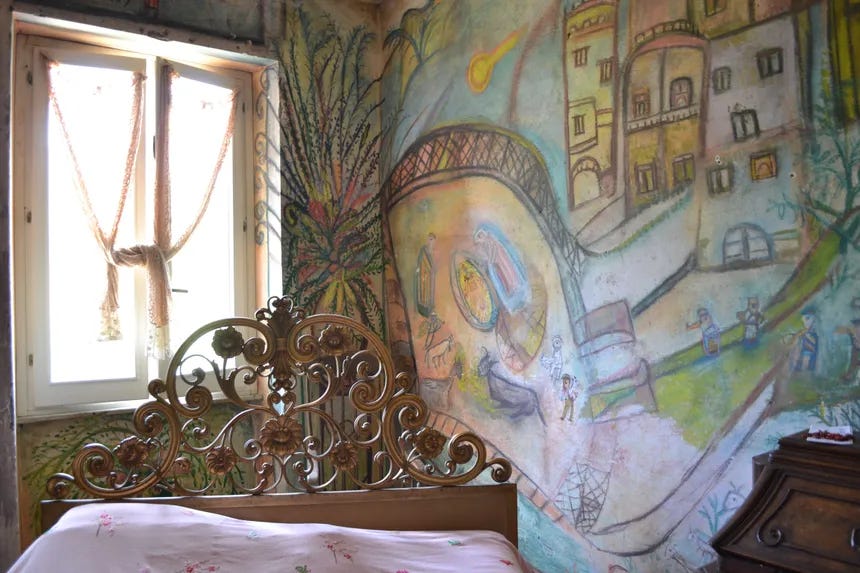
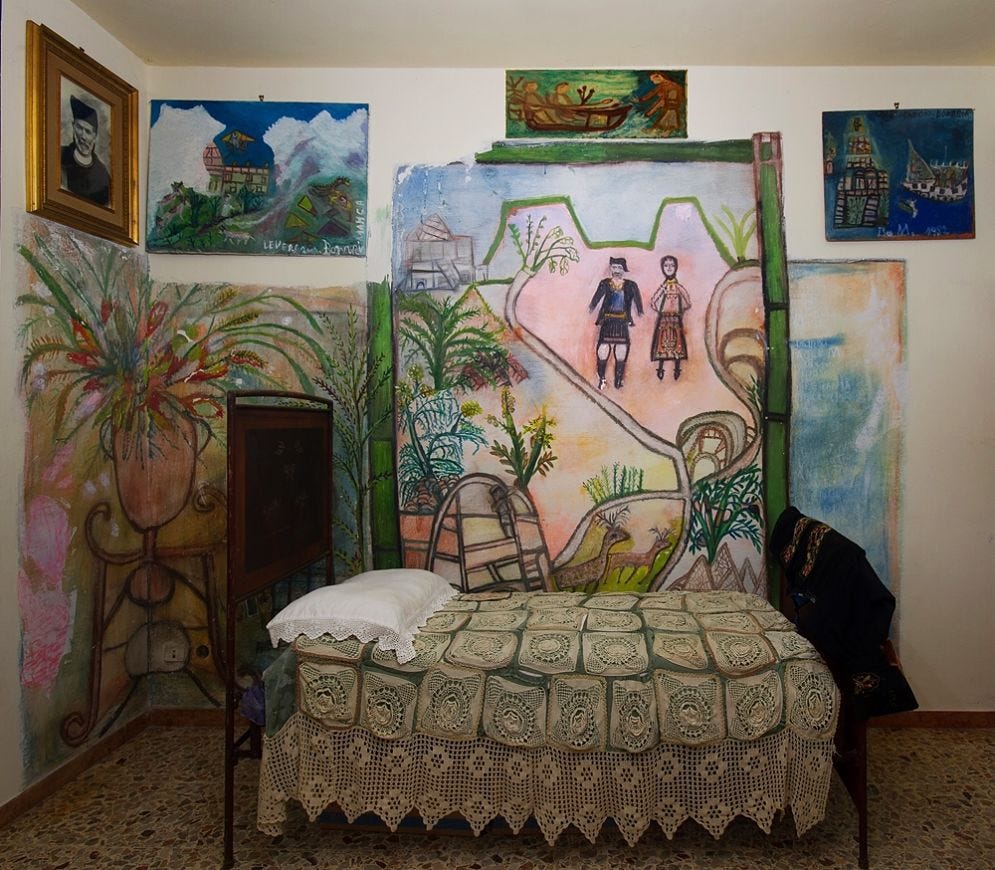
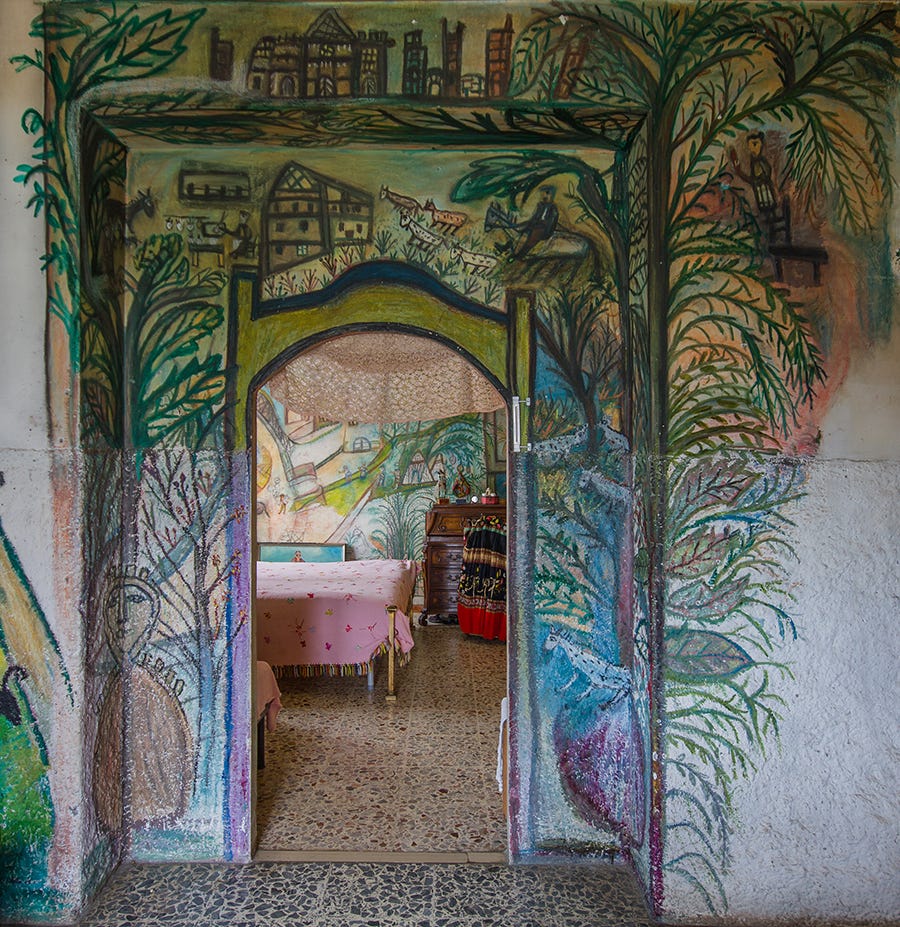
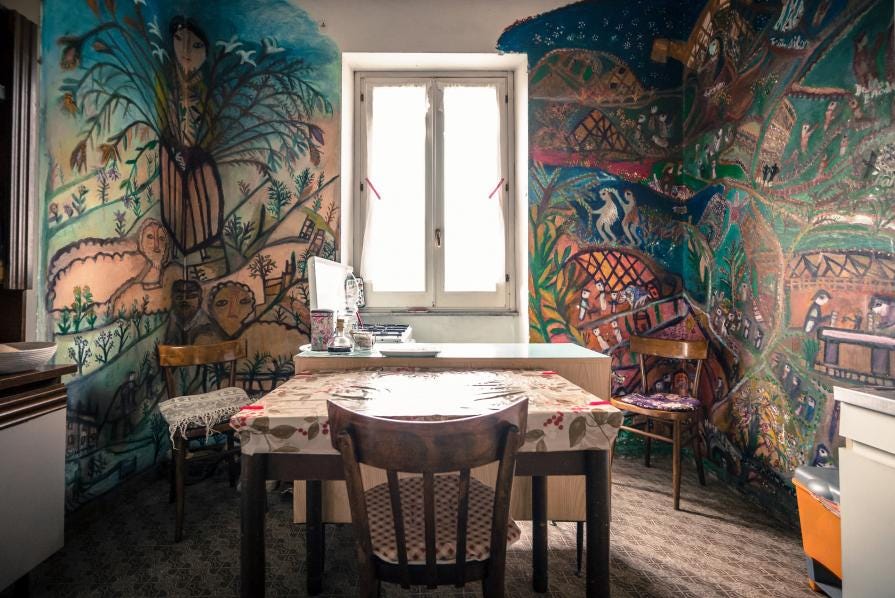
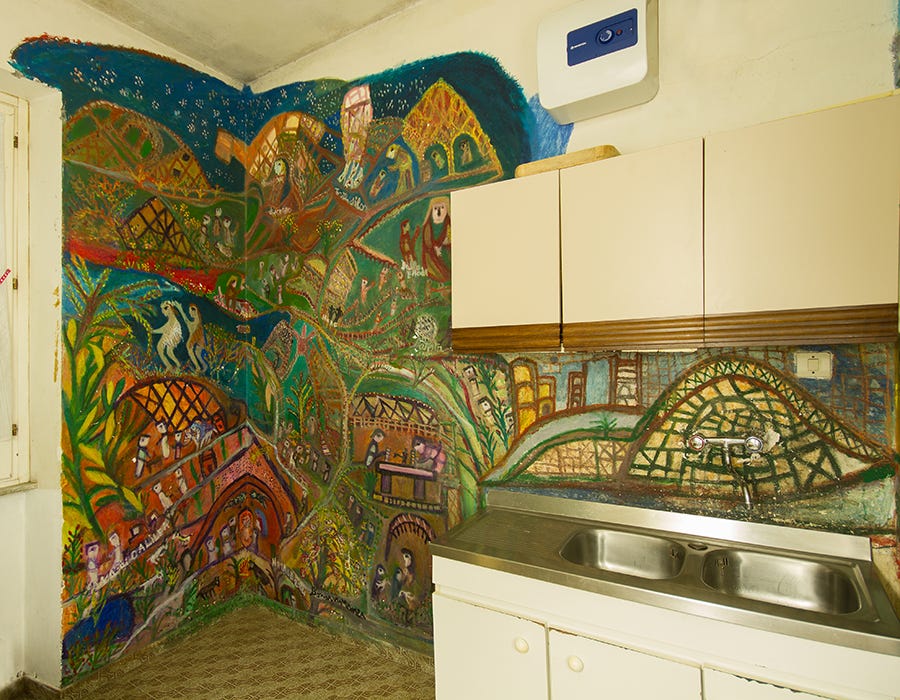
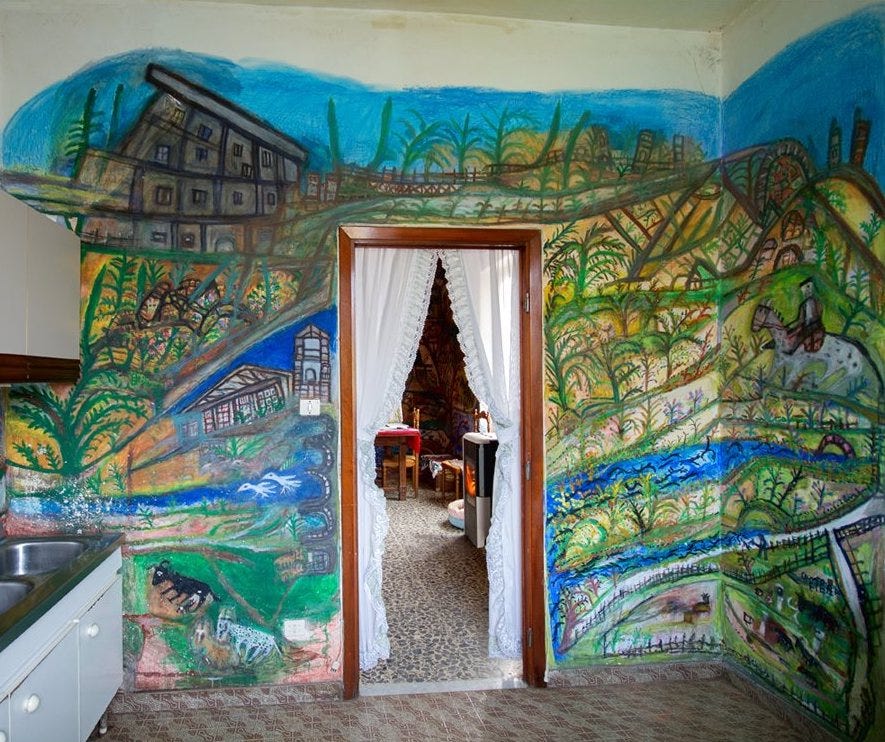
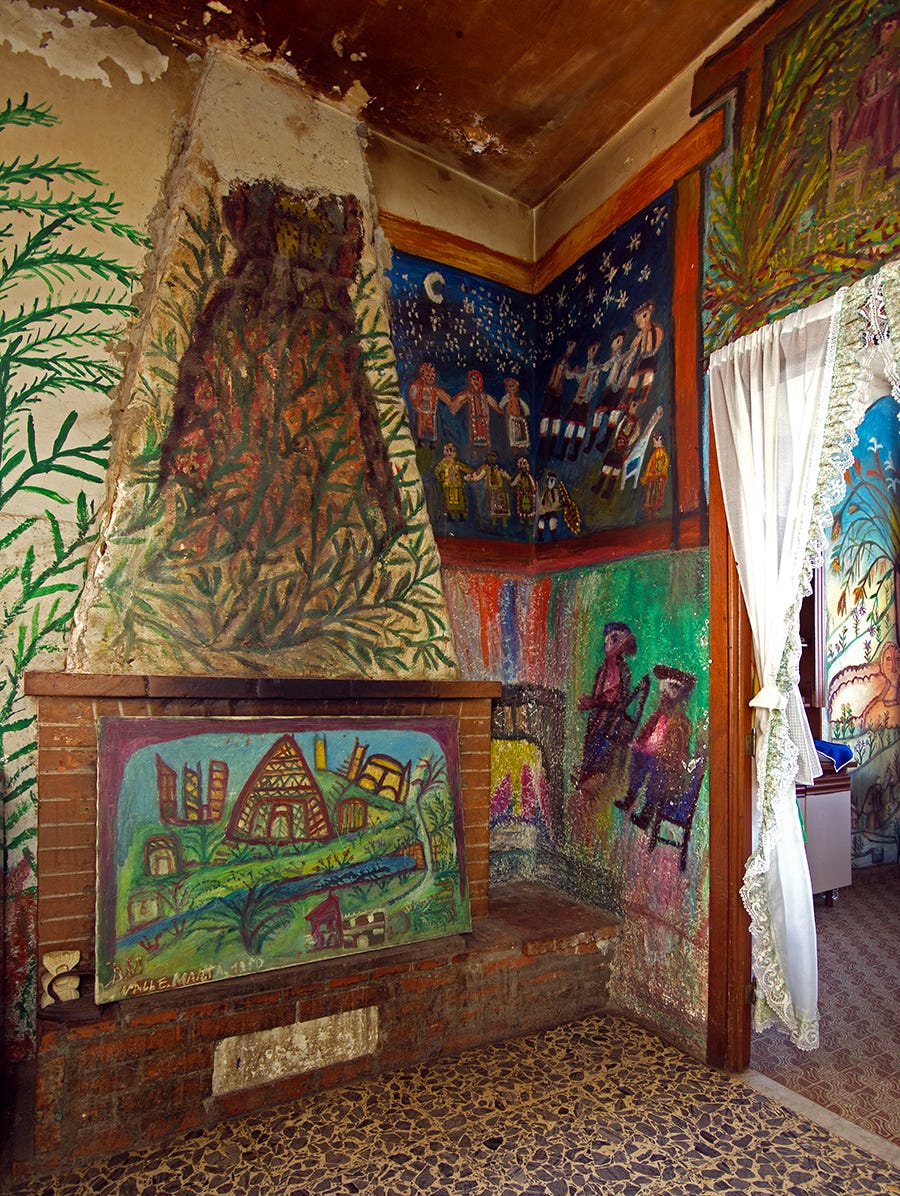
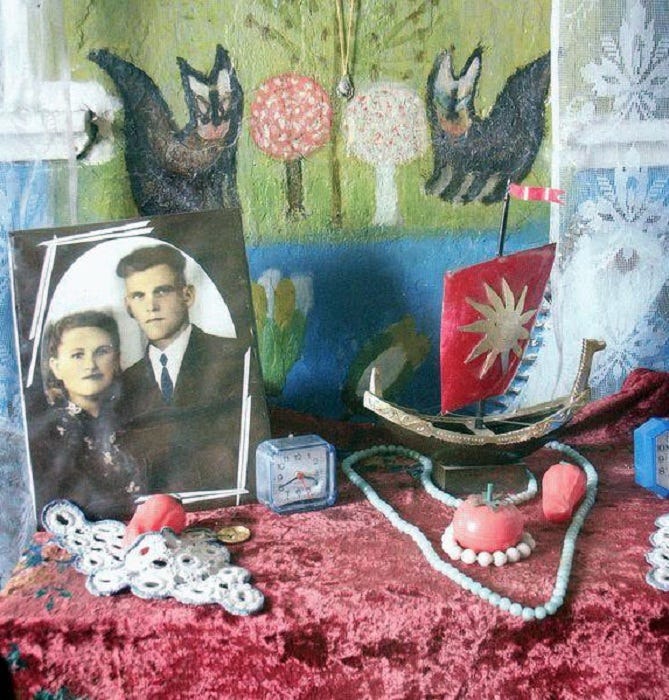
woah this makes me think of wanting to color the walls as a child. So uninhibited. Apparently I still have the urge to do so!!
Oh this was a delightful read. Thank you so much for having the courage to share your mind with us, it's truly moving something in me. Do those things float to you in some kind of way or is this extensive research? Would love to know!